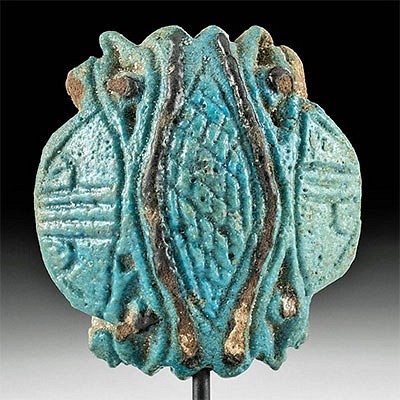Colima Obsidian Knapped Core & Razor Shard
Lot 229
About Seller
Artemis Fine Arts
686 S Taylor Ave, Ste 106
Louisville, CO 80027
United States
Selling antiquities, ancient and ethnographic art online since 1993, Artemis Gallery specializes in Classical Antiquities (Egyptian, Greek, Roman, Near Eastern), Asian, Pre-Columbian, African / Tribal / Oceanographic art. Our extensive inventory includes pottery, stone, metal, wood, glass and textil...Read more
Categories
Estimate:
$400 - $600
Absentee vs Live bid
Two ways to bid:
- Leave a max absentee bid and the platform will bid on your behalf up to your maximum bid during the live auction.
- Bid live during the auction and your bids will be submitted real-time to the auctioneer.
Bid Increments
| Price | Bid Increment |
|---|---|
| $0 | $25 |
| $300 | $50 |
| $1,000 | $100 |
| $2,000 | $250 |
| $5,000 | $500 |
| $10,000 | $1,000 |
| $20,000 | $2,500 |
| $50,000 | $5,000 |
| $100,000 | $10,000 |
| $200,000 | $20,000 |
About Auction
By Artemis Fine Arts
May 27, 2021
Set Reminder
2021-05-27 10:00:00
2021-05-27 10:00:00
America/New_York
Bidsquare
Bidsquare : CLEARANCE | Antiquities & Ethnographic Art
https://www.bidsquare.com/auctions/artemis-gallery/clearance-antiquities-ethnographic-art-7010
Featuring discounted pricing and many new items! Asian art, Classical antiquities from Egypt, Greece, Italy, and the Near East...plus Pre-Columbian, Tribal, Russian Icons & Enamelware, Spanish Colonial, Fine Art, more! Some starting prices have been reduced up to 65% from original auction prices! Artemis Fine Arts info@artemisfinearts.com
Featuring discounted pricing and many new items! Asian art, Classical antiquities from Egypt, Greece, Italy, and the Near East...plus Pre-Columbian, Tribal, Russian Icons & Enamelware, Spanish Colonial, Fine Art, more! Some starting prices have been reduced up to 65% from original auction prices! Artemis Fine Arts info@artemisfinearts.com
- Lot Description
**First Time At Auction**
Pre-Columbian, West Mexico, Colima, ca. 300 BCE to 300 CE. A fine obsidian core and a shard flaked from another core, both great examples of the tool making process in Meso-America. The obsidian core exhibits an elongated and slender form with a flat base. The fluted sides taper from the base to the rounded tip. Originally the core was a cone shape, but it was then used to form smaller razor-sharp blades. The blades were created by applying pressure to the base of these cores to flake off a part of the face, which created the fluted surface seen here. The shard is an example of what these blades would look like once flaked. Obsidian was revered by ancient Mesoamericans as being some of the finest and sharpest material available, which is nicely demonstrated by the blade! Size of core: 7" L x 1.5" W (17.8 cm x 3.8 cm); blade: 4.5" L x .375" W (11.4 cm x 1 cm)
Obsidian - also known as "iztli" - fascinated the ancient Mesoamericans; the Aztecs even had a god, Tezcatlipoca, who was the Lord of the Smoking Obsidian Mirror. The shockingly sharp edges and point of this piece demonstrate its great allure. In a world without metal, this sharp quality was especially important for ceremonies of ritual bloodletting and human sacrifice. The difficult-to-obtain material came from volcanic sources in the Sierra Madre of Mexico and Guatemala, traded hundreds of miles to meet the demand for sharp cutting tools and ritual objects, and then were struck using a deer antler or small hammer stone to form blades and other shapes.
Provenance: ex-Dr. David Harner collection, Arkansas, USA, 1950s-1960s
All items legal to buy/sell under U.S. Statute covering cultural patrimony Code 2600, CHAPTER 14, and are guaranteed to be as described or your money back.
A Certificate of Authenticity will accompany all winning bids.
We ship worldwide and handle all shipping in-house for your convenience.
#161379Chips and loss to faces and tip of core. Blade has minor nicks. Blade comes from a different core.Condition
- Shipping Info
-
All shipping is handled in-house for your convenience. Your invoice from Artemis Gallery will include shipping calculation instructions. If in doubt, please inquire BEFORE bidding for estimated shipping costs for individual items.
-
- Buyer's Premium



 EUR
EUR CAD
CAD AUD
AUD GBP
GBP MXN
MXN HKD
HKD CNY
CNY MYR
MYR SEK
SEK SGD
SGD CHF
CHF THB
THB










